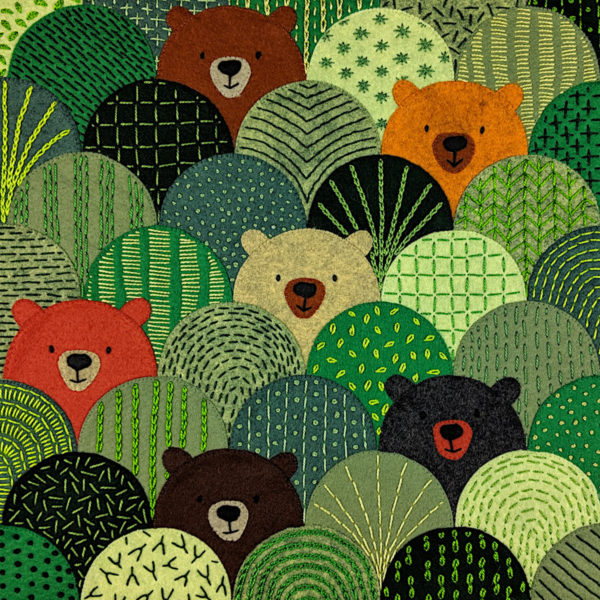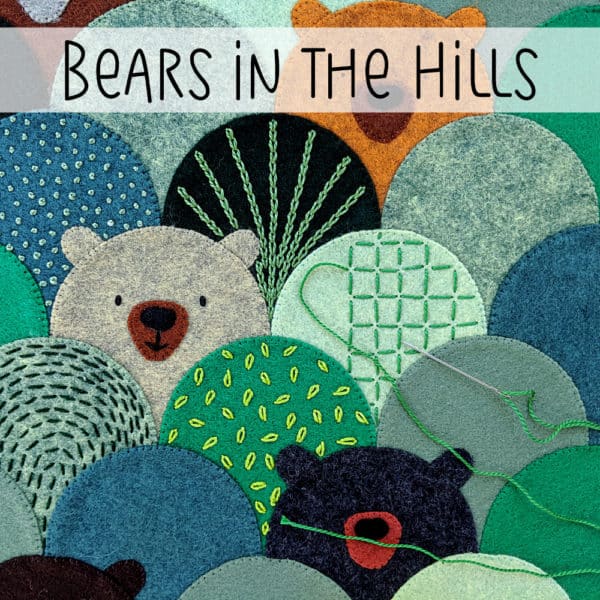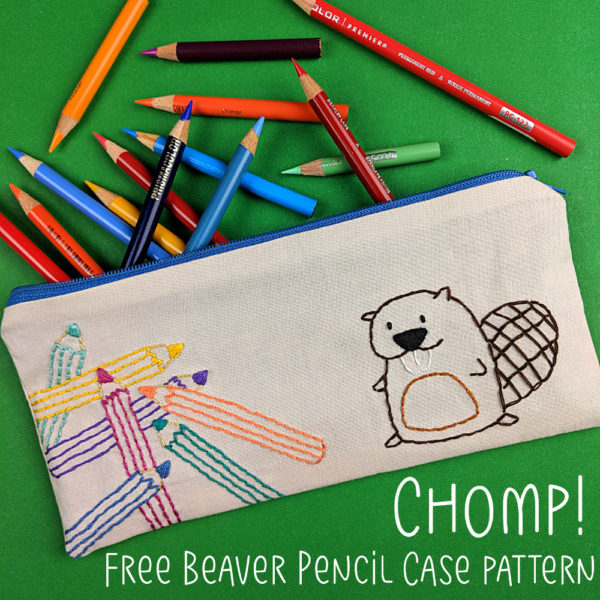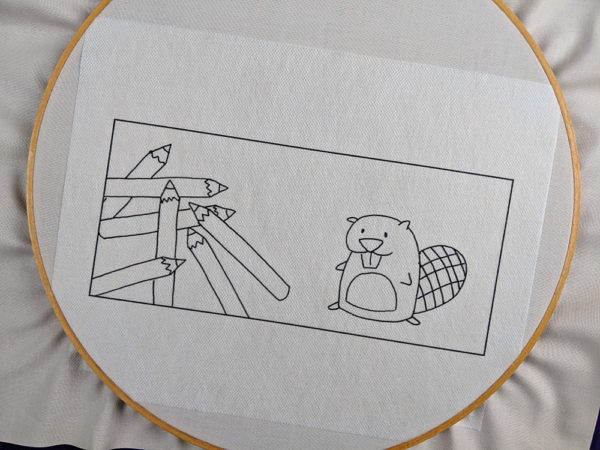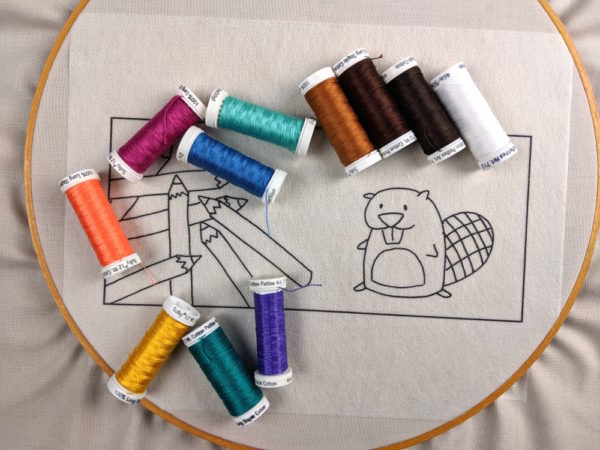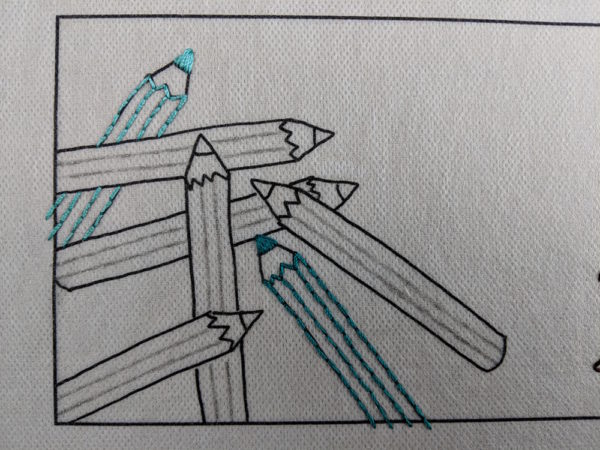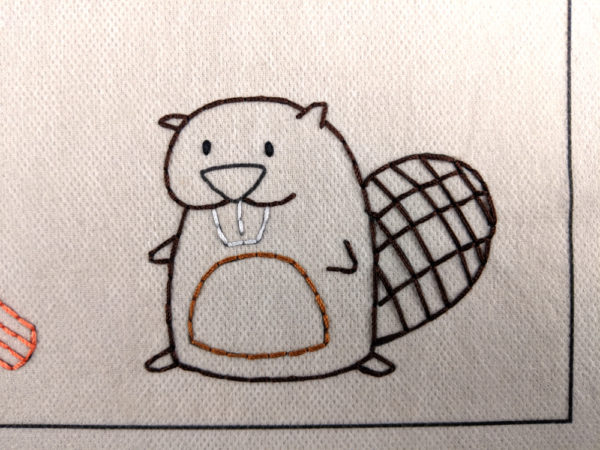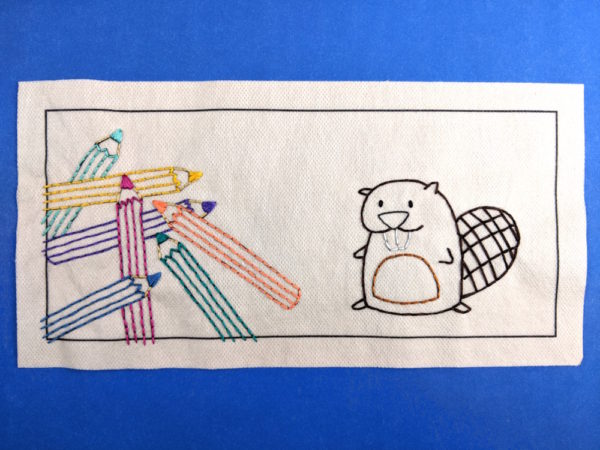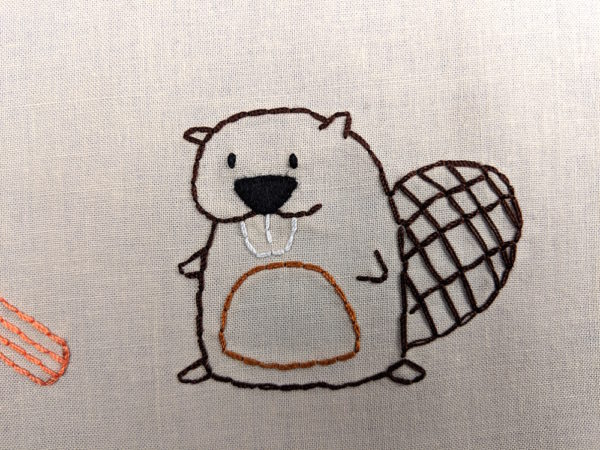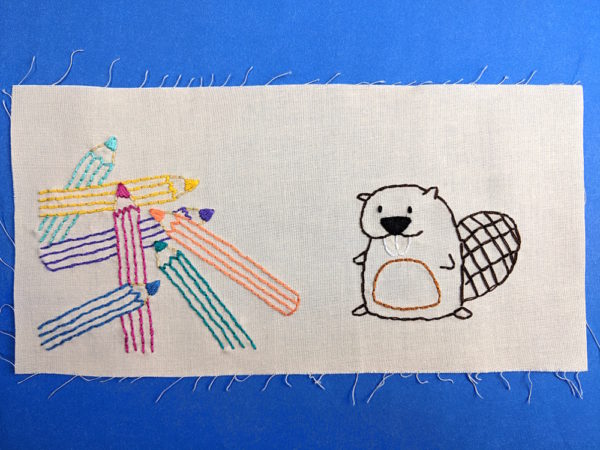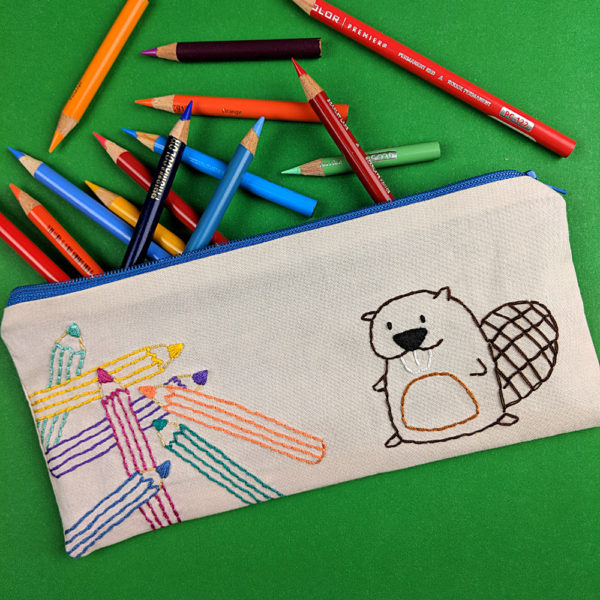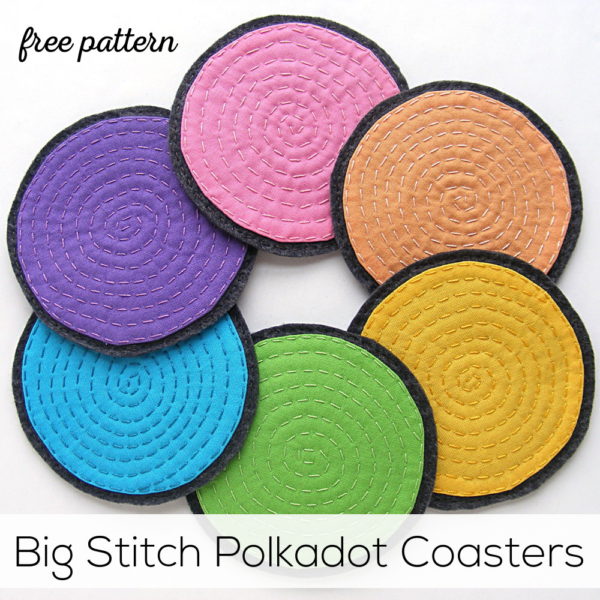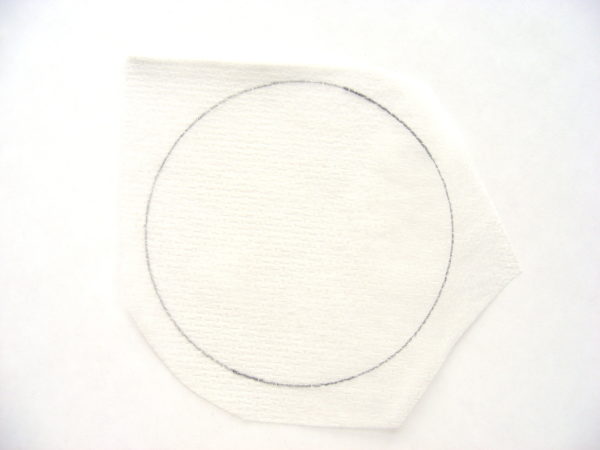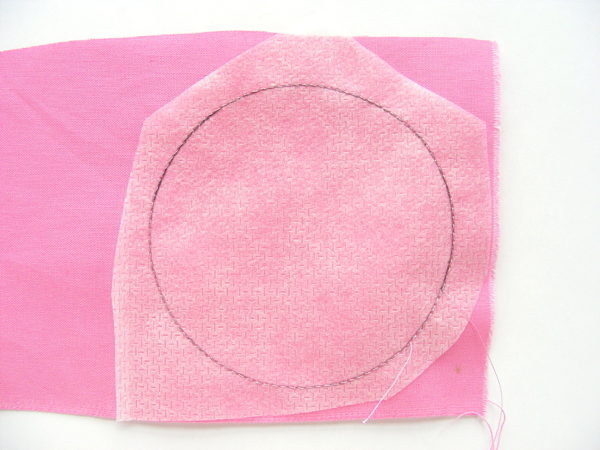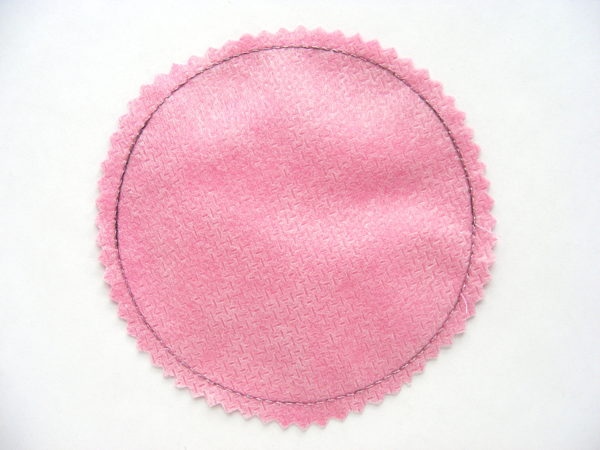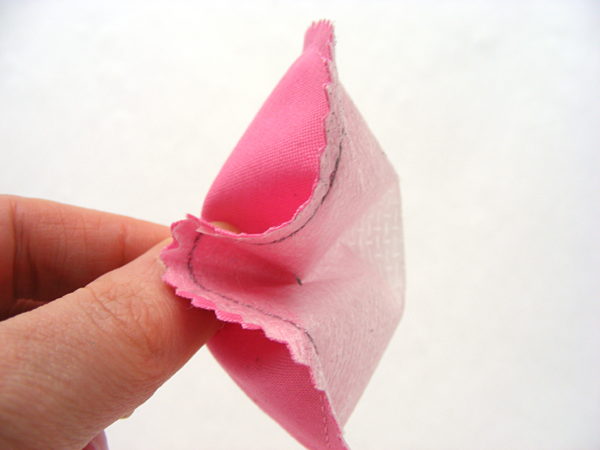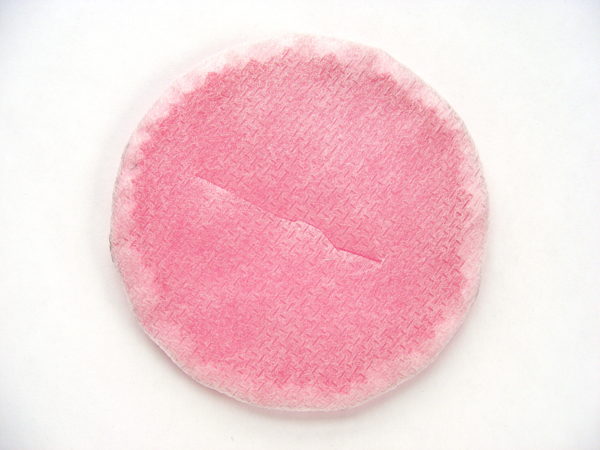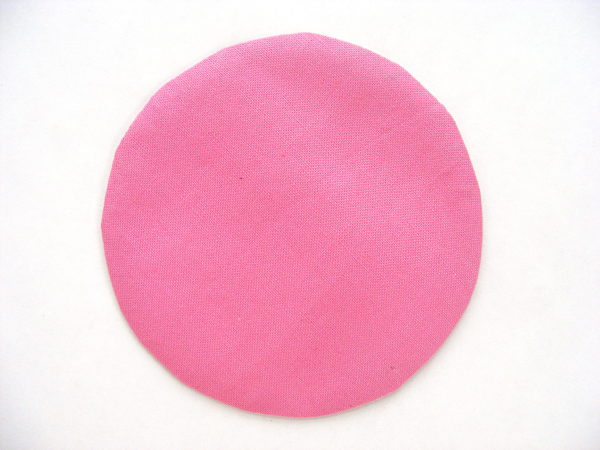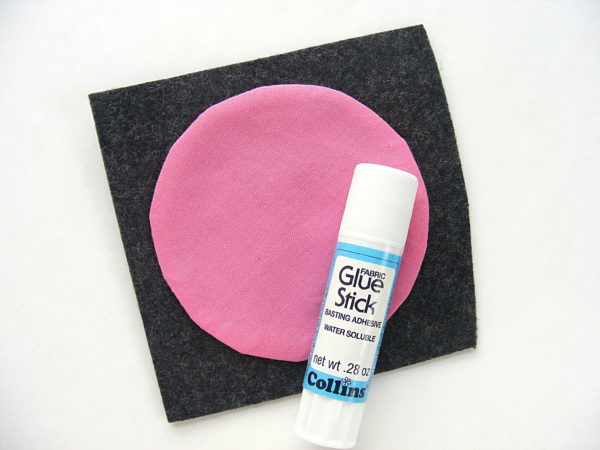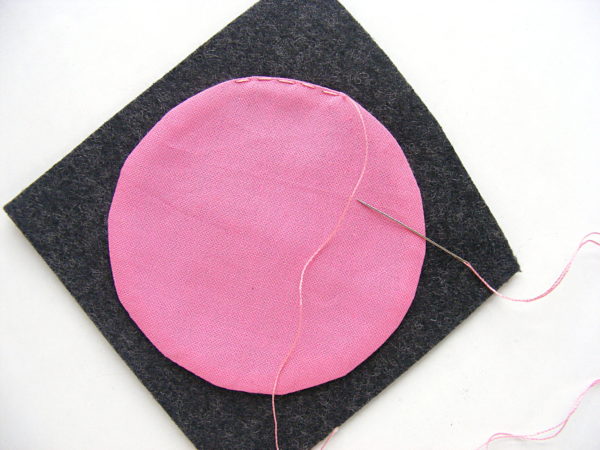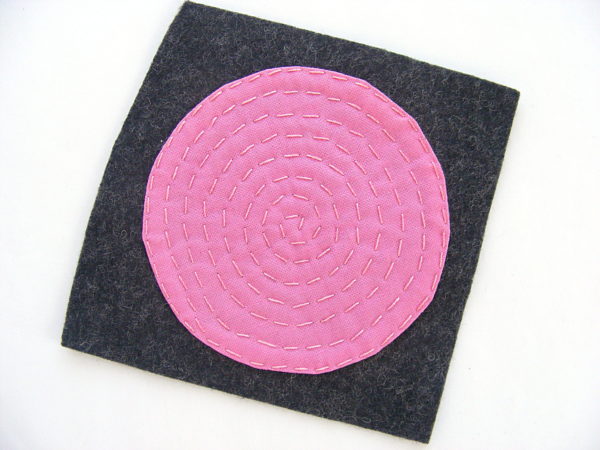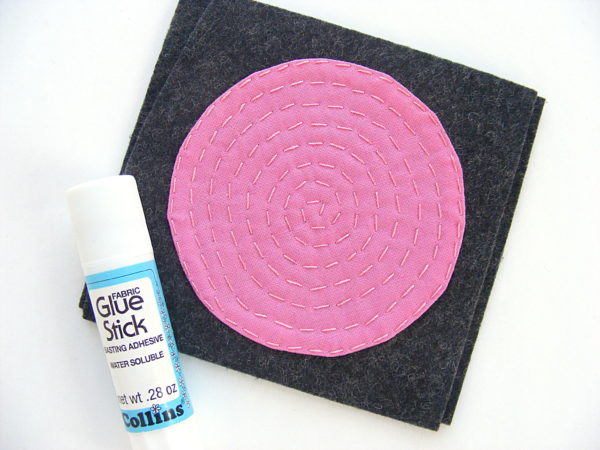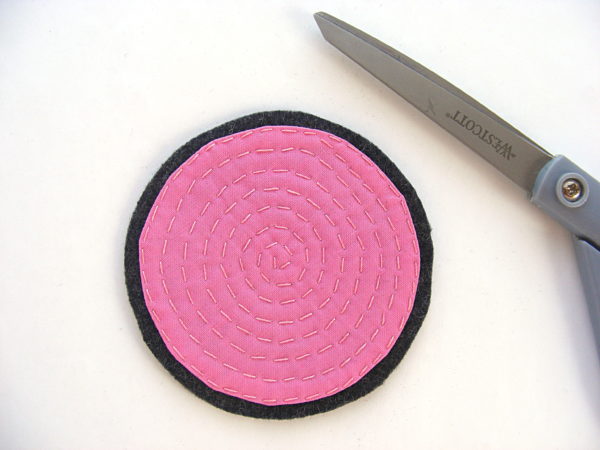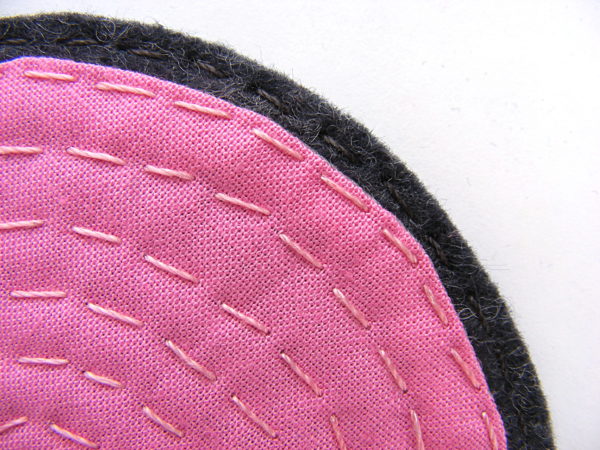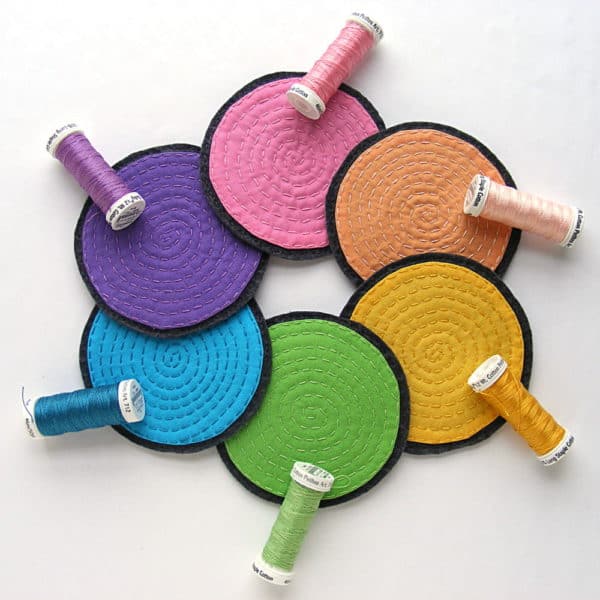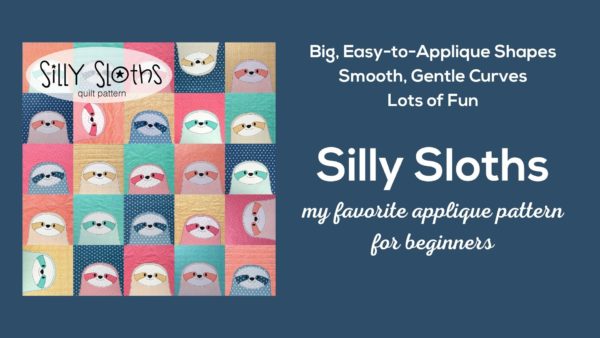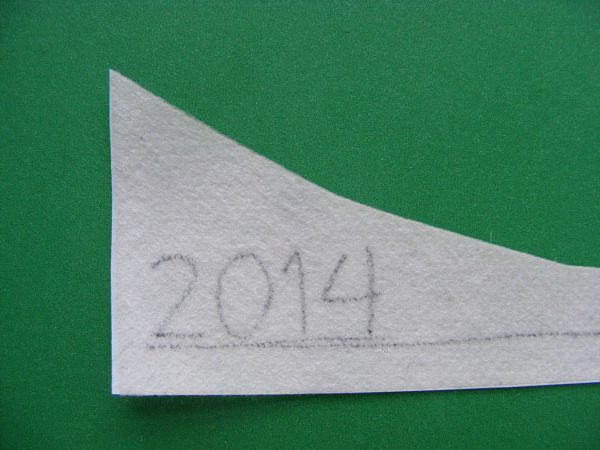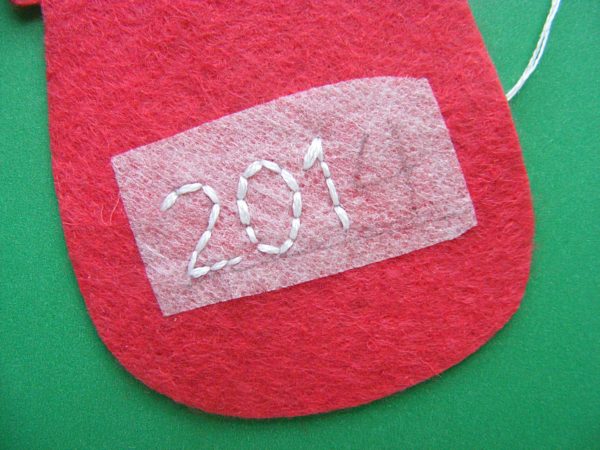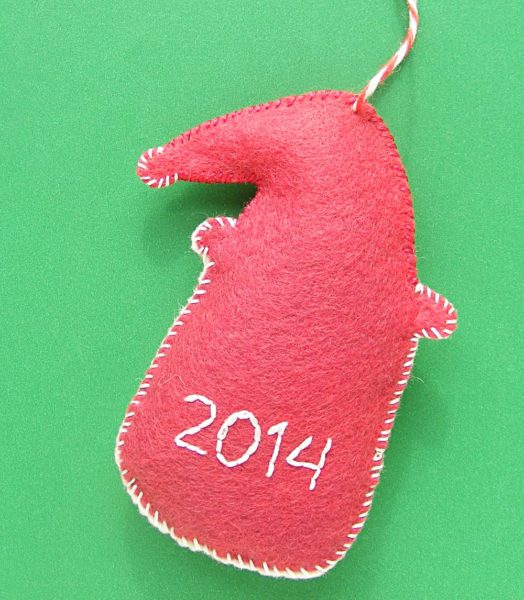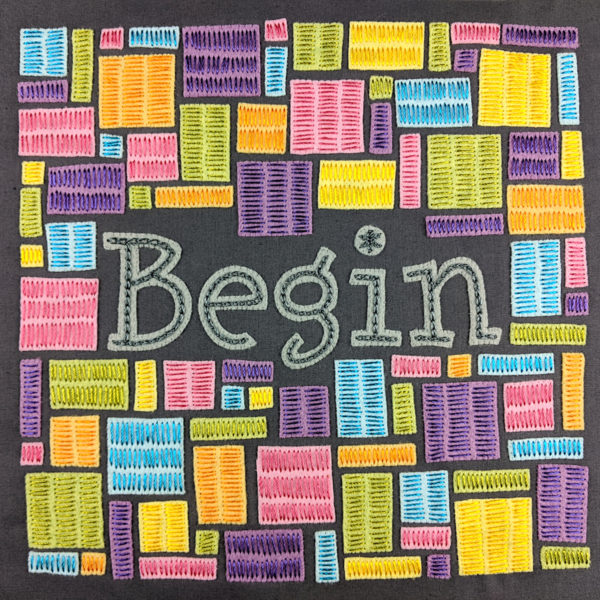
I started this project AGES ago and finally finished it. I haven’t been working on it anything like steadily. I didn’t plan on releasing a pattern, so I just picked it up and worked on it at odd moments, and didn’t worry about documenting the process much.
Of course, now people want a pattern! I’m happy to share. It was a lovely project and one that was really relaxing and low-pressure to stitch. I’m just letting you know upfront that it’s a pretty loose pattern. 🙂
So here’s how to make it!
My project finished at 11 inches square. That gives me a little bit of breathing room all the way around, because I’m going to put it in a 12-inch frame. You can size yours up or down as you like, but here are the materials you’ll need for this size.
- One 20-inch square of background fabric. I used a nice dark slate grey.
- Assorted wool felt pieces. I used all the colors in the Frosty Pastels felt bundle except the white.
- Thread to match the felt. I used Invisifil 100 wt. thread. (Yes – you read that right. 100 weight. It’s the thinnest thread I’ve ever used – like sewing with spider silk.) I matched the colors to the felt but, honestly, that thread is so fine that you could probably just use a medium grey for everything. If you want to use embroidery floss, there’s a bundle that matches the felt in the Frosty Pastels collection.
- Slightly darker, thicker thread to contrast with the felt. I used Razzle 8 wt. rayon thread. I love the way the shiny rayon thread contrasts with the wooly felt.
- Needles appropriate for your thread size.
- Fabric glue stick.
- Freezer paper (optional)
- Frame or hoop (I used a 14-inch PVC frame)
Download the pattern here.
Print it at 100% size – or scale as desired. You can print directly onto the freezer paper, or you can print it onto regular paper and then trace it onto freezer paper.
Using freezer paper to cut small pieces like these makes it sooooo much easier to be accurate. You’ll find more info here.
The pattern page has the letters and eight blocks of blocks.
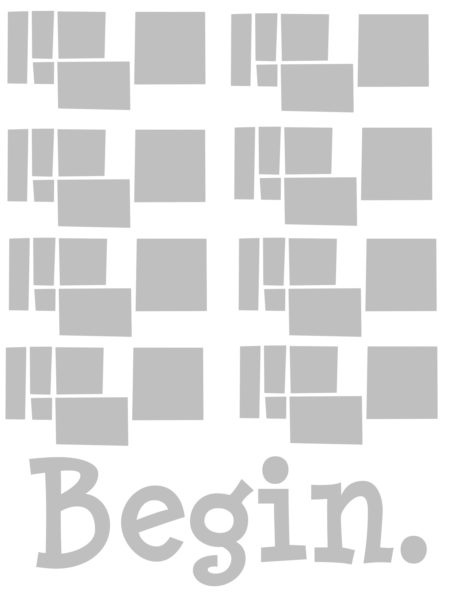
Cut the letters out of light grey felt.
Cut four blocks of blocks out of each of your other six felt colors. That way you’ll end up with four of each shape/size in each color. That’s more than you’ll actually need – but it will give you some extras to play with as you arrange.
Ok. Here’s where things are a little loose. Sorry – I didn’t take any photos of this process and I was really just winging it. That’s ok – it means you can wing it too!
Lay your background square on a flat surface.
Map out a 12-inch square in the center. I used a few rulers to block it out – use what you have handy. You just need to be able to “see” the borders of your square of workable space.
Start by laying out the letters, centering them in the space.
Here’s the finished layout again so you can refer to it for the next bit.

Start building your way out from your letters, filling the square space you have mapped out. I followed a few “rules” as I built.
- I kept all my blocks running horizontally or vertically. None of them are tipped at an angle.
- I tried to keep the spacing between the blocks pretty consistent. Think of it like grout between tiles.
- I tried to never have two tiles of the same color right next to each other.
- I sometimes had two of the same shape next to each other, but I kept it a pretty rare thing.
You can follow my finished project as a map if you like, but please don’t feel like you need to follow it exactly.
Once you’re happy with how everything looks, use a swipe of fabric glue stick to stick all the pieces in place. If you don’t have a glue stick, you can use liquid glue like Elmers, but I recommend brushing it on. If you squeeze it right out of the bottle you may get too much glue on there and it will seep through to the top of your felt and remain visible even after it dries. Don’t use a restickable glue (like a post-it glue stick). As soon as you put your hoop in the frame and pull it tight, those pieces will pop right off. Ask me how I know. 😛
Let it dry and hoop it up. You’re ready to start stitching!
Now I started taking some pictures. 🙂
The first thing I did was whipstitch around each piece using matching thread. This tutorial shows how I whipstitch applique felt.
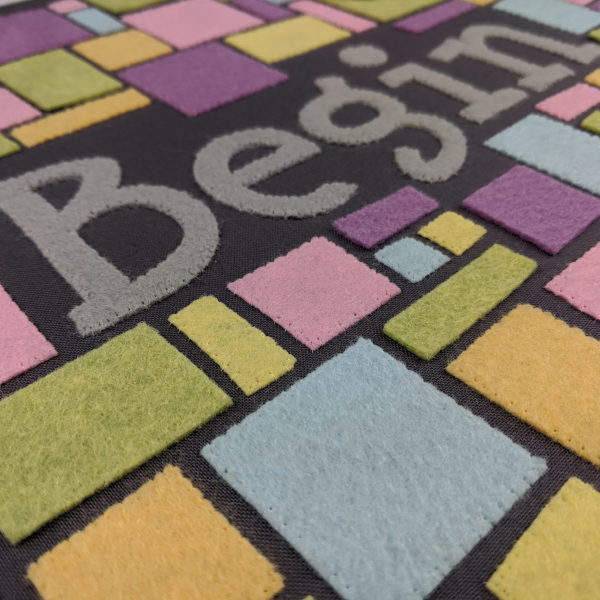
Once everything’s whipstitched down I can stop worrying about accidentally pulling any of the pieces up, or catching my thread on them. Time to relax and settle into the fancy stitching.
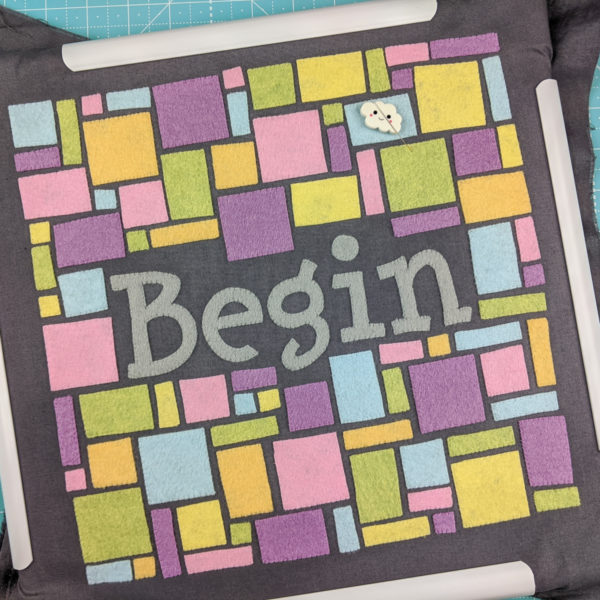
I chain stitched in dark grey right down the center of each letter.
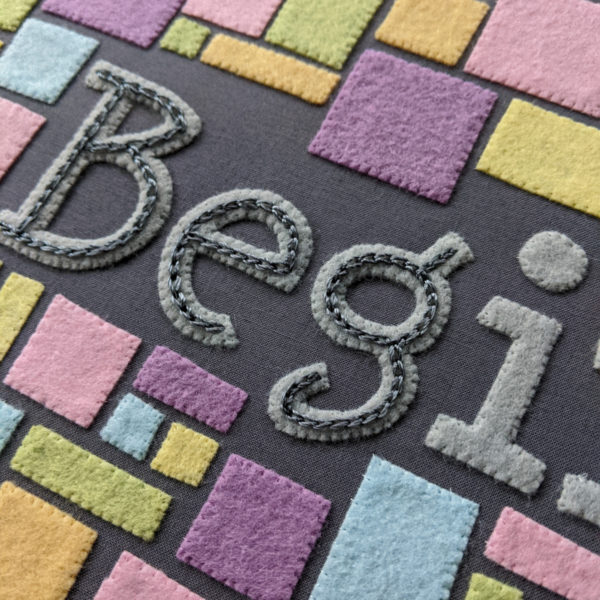
There’s a tutorial here showing how to chain stitch.
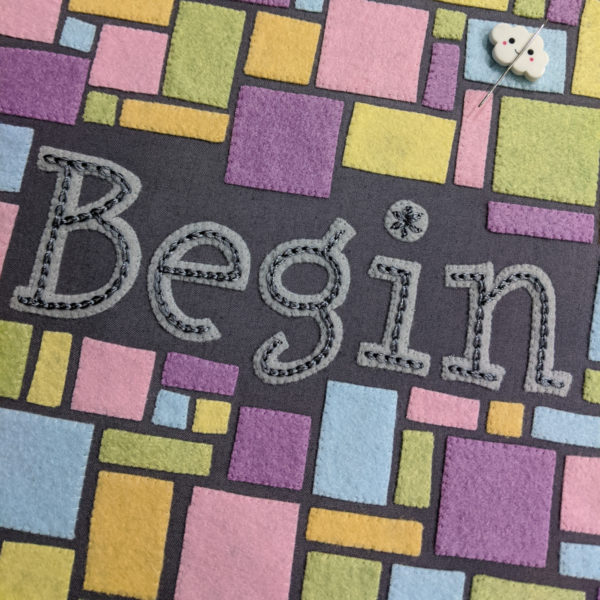
I stitched a lazy daisy in the center of the dot over the. Here’s the video showing how to stitch a lazy daisy.
Finally, I wanted to embellish each block. The stitching is all tone-on-tone, using a thread color a little more vibrant than the felt color. I really agonized over what kind of stitching. I debated it for what felt like weeks and finally settled on simple stacks of straight stitches. I just love the texture of that!
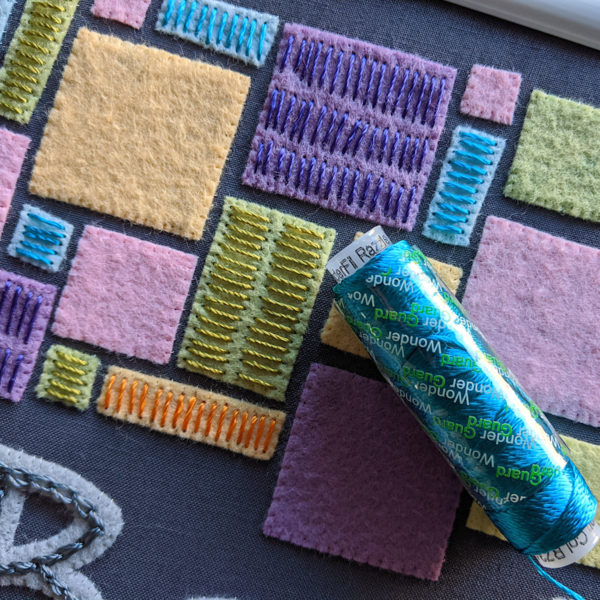
I started with the long skinny pieces since there was only one way I wanted to stitch those. Just stitch a stack that almost fills the block.
Next I stitched the larger rectangles. They’re twice as wide as the skinny rectangles, so they get two stacks of stitches, side by side, but not touching.
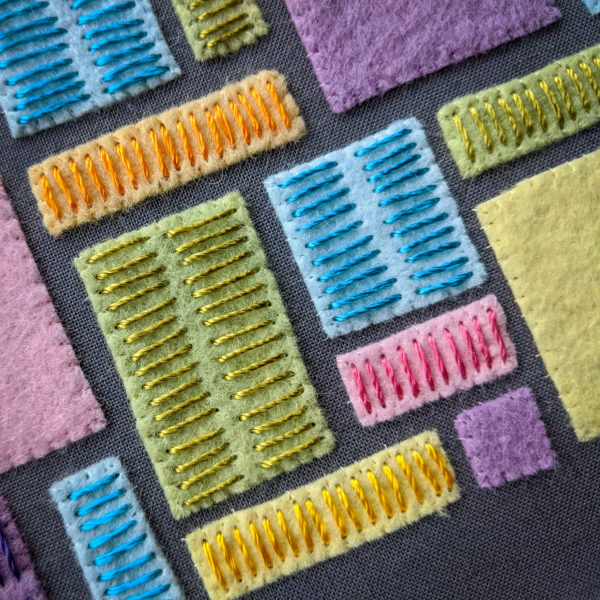
Finally, I stitched the squares. The small squares got one stack, the medium got two, and the large got three. But which direction? Horizontal or vertical? I made the call for each square based on what kind of stitching was going on around them, trying to keep the direction as varied as possible.
Done!

We’re currently staying home because of the pandemic, but when I can leave the house again, I’ll get a 12-inch frame to finish it. Here’s a tutorial showing how to frame textiles without damaging them.
Happy stitching!





